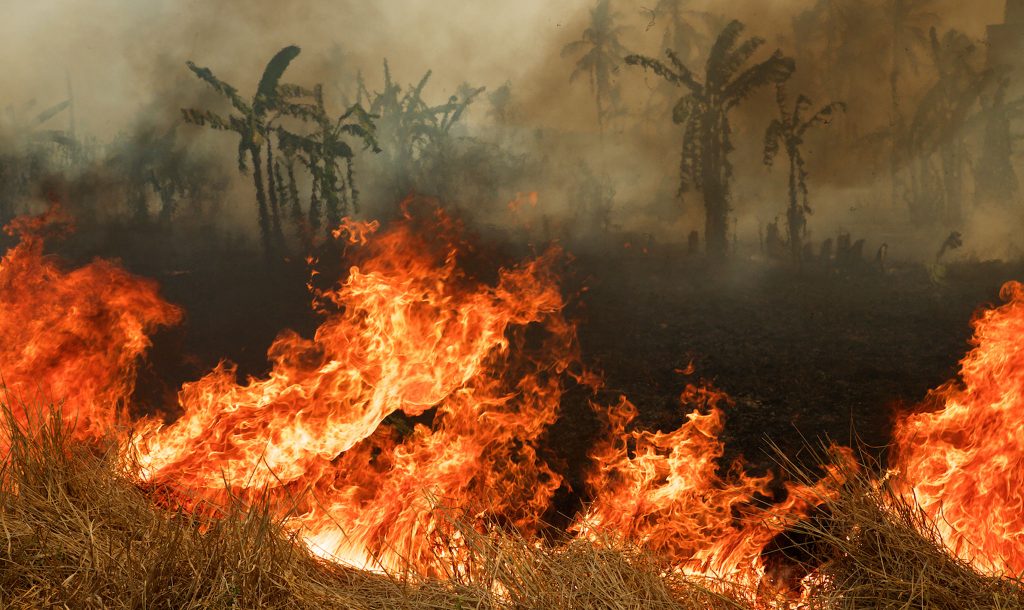Poor understanding of slash and burn farming in Indonesia has led to poor policy solutions, writes Albert Hasudungan.
Indonesia has been susceptible to forest fires in Sumatra and Kalimantan over the last five years. Stopping forest fires in tropical countries has been part of global policy to stop forest clearing. Yet, from the perspective of local government in Indonesia, this has often been misinterpreted as stopping slash and burn farming. Indeed, slash and burning farming is a key mechanism of the indigenous Dayak people to meet their food supply and preserve their cultural heritage.
During my recent six-month fieldwork exploring the issue in West Kalimantan, I witnessed policy-making misperceptions regarding unsustainable slash and burn farming. Through interviews, informal conversations, and observations, I saw the major disconnect between the views held by policymakers and local community aspirations.
Firstly, according to policymakers, slash and burn farming has been associated with the local communities’ effort to produce as much rice as possible to then be sold at market. However, in a conversation with Dayak Iban and Dayak Tamambaloh, slash and burn farming is used to cultivate rice alongside other food. This Dayak Iban have lived close to large-estate concessions, while Dayak tamambaloh living close surrounding Batang kerihun National Park. Both of them I found in the uphill landscape, where government program for settled-wet rice farming is not fit with their local environment. Moreover, this slash and burn farming is used to supply household’s with the amount of food they need in accordance with their customary rules.
Secondly, policymakers have the wrong image of land that is associated with slash and burn or swidden farming. Indonesian policymakers view swidden farming land as unused or waste land, as ownership is unclear and it is associated with traditional farming.
Instead, to Dayak Iban and Dayak Tamambaloh, cooperation among households in slash and burn farming are seen as central activities to maintaining friendships and sharing risk among households. In their culture, swidden land is the last resort to survive an uphill battle against fluctuating food prices in a global market.
Furthermore, from the policy-making perspective, slash and burn farming has been associated with fires in the areas of what the officials demarcate as secondary forest area. In the field application, I acknowledge they customarily slashed some part of secondary forest. But in their customary applications, the swidden are restricted to not fulfil for accumulating surplus, but as their self-consumption. They treat swidden as regeneration and distribution of food supplies to maintain their customary resilience, as written in many anthropological and historical scholarships of Dayaks in West Kalimantan. From my field observations, local slash and burning farming was rotated among different secondary forests.
In these rotations, local communities treated land as precious, and cultivated different food crops between regenerating trees crops. Rotation is a part of Dayaks’ customary knowledge to regenerate and maintain the local environment, and they have an intimate understanding and strong connection with this regeneration system.
And while politicians and other elites are keen to stop slash and burn farming in efforts to stop forest fires, acts and rules prohibiting its use have been met by local resentment. For example, in July 2016 the local government of Kapuas Hulu prohibited slash and burn farming in forests. Fourteen Dayak sub-ethnic groups in the district protested the decision at local parliament offices. They said that all their communities had been slashing and burning in forests for many years.
These policy-making fallacies regarding slash and burn farming have had real costs for local communities. Meanwhile business and local elites maintain are able to resist law enforcement and sanctions. Sustaining fallacies will cause greater marginalisation for already weak parties like swidden communities in Kalimantan.
Albert Hasudungan is PhD student of human geography and has completed 6 months of field work in Kapuas Hulu.
 Facebook
Facebook  Twitter
Twitter  Soundcloud
Soundcloud  Youtube
Youtube  Rss
Rss 